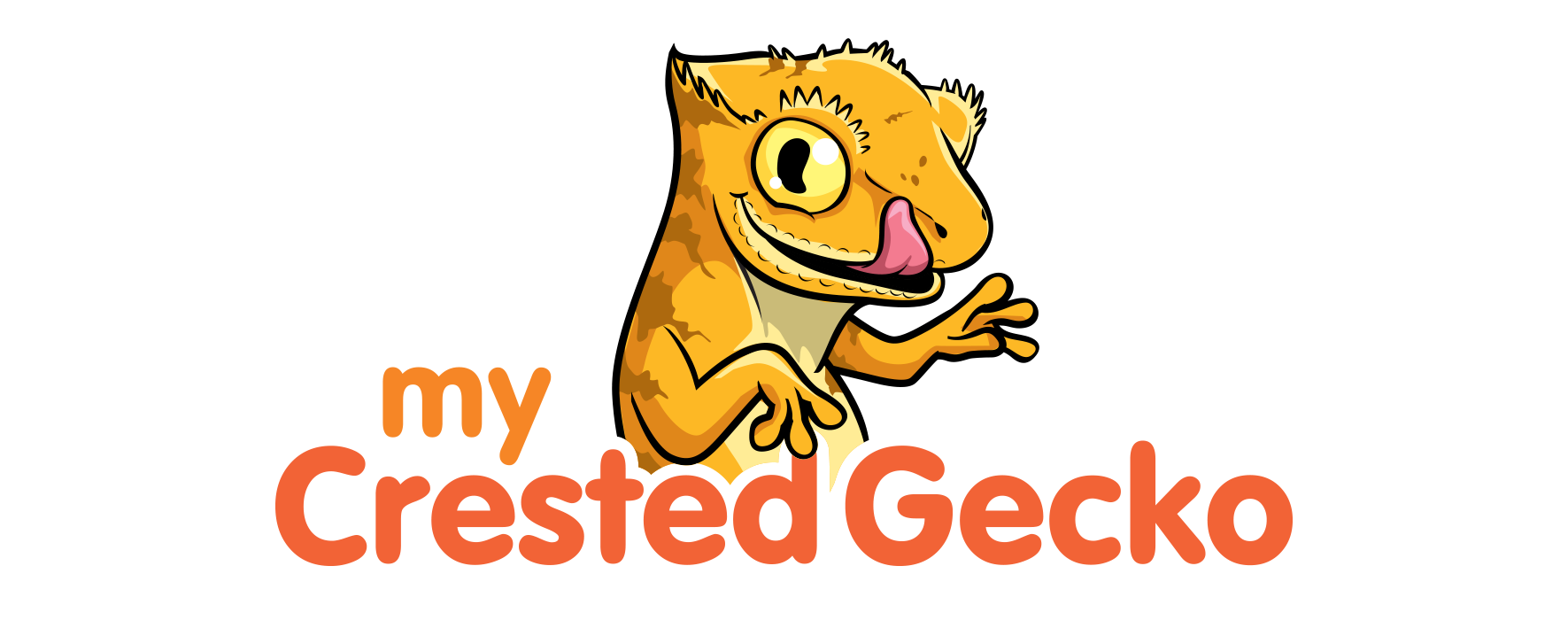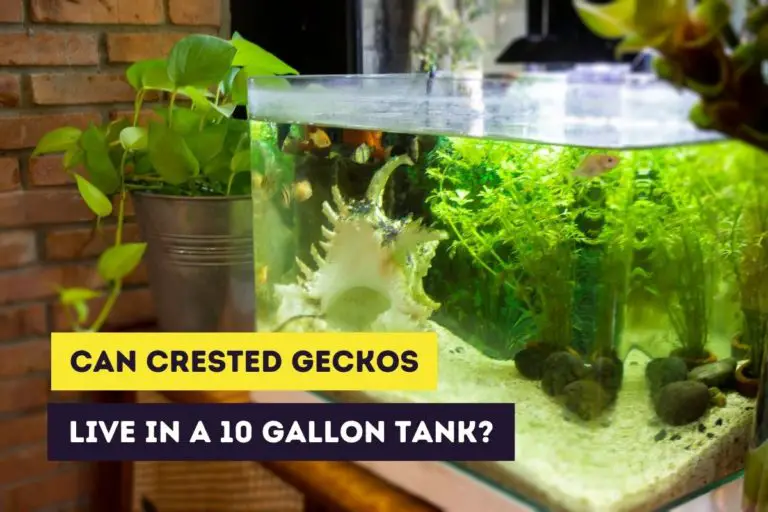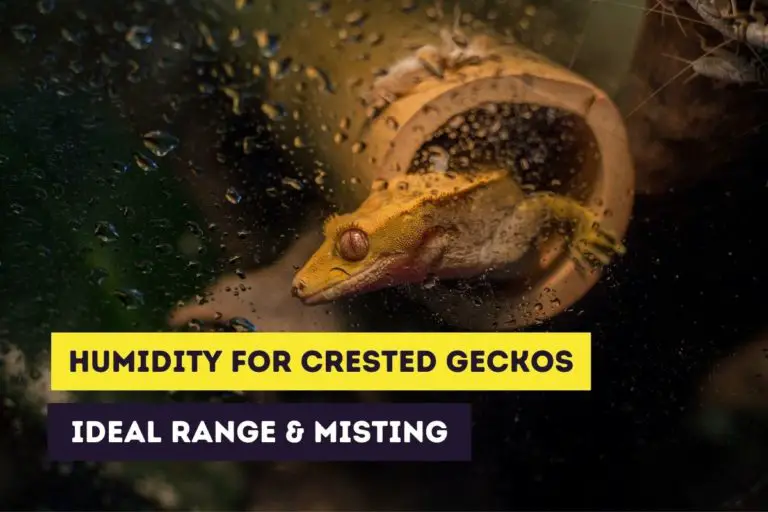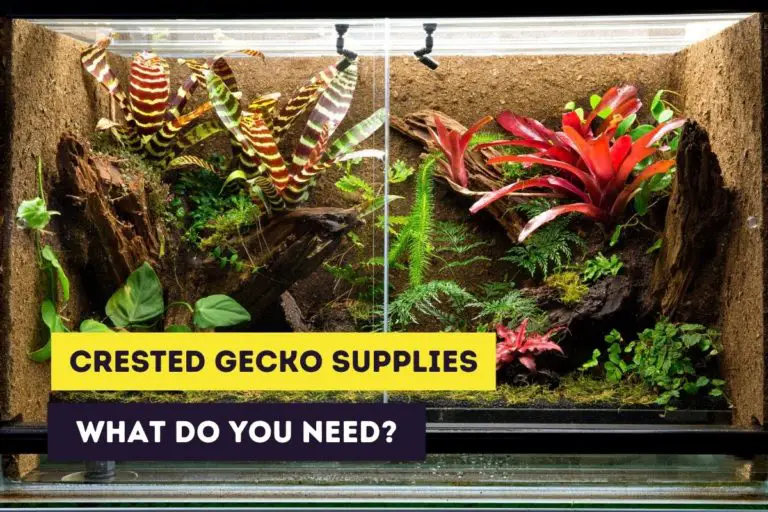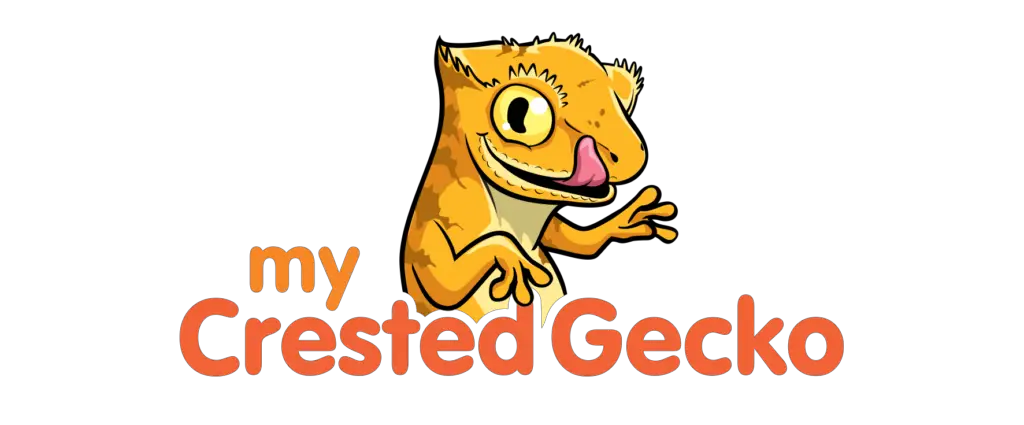Everything You Need to Know About Terrarium Plants for Crested Geckos
Your crested gecko won’t like living its entire life in a bare and boring vivarium. A crested gecko is a (semi-)arboreal pet and will need climbing possibilities. So, you’ll need to add some foliage and plants for them to jump, climb, and play. Any good crested gecko terrarium will contain a wide variety of plants, also called terrarium plants.
I’m talking about terrarium plants because it’s the more commonly used term for these plants. But you’ll also see other sites – including this one – talking about a vivarium and vivarium plants. In this context, there’s no real difference.
Terrarium plants will offer a great distraction for your crested gecko and will prevent boredom, give him a workout, and lets him exhibit natural behavior. The right plants will also create a similar environment as your gecko would be used to when in nature.
In this article, you’ll learn everything there is to know about terrarium and vivarium plants. At the end of this article, you’ll know if you should get live or fake plants, what types of terrarium plants are suitable for crested gecko terrariums, and which plants are toxic and should be avoided. Lastly, I added some great sites for you to find terrarium plants.
If you’re interested in stickers or other products of crested geckos, you can always visit our Etsy Shop, which is called Artful Animalia. We currently only send stickers in the United States. If you’re interested in certain crested gecko-related products, don’t hesitate to contact us.
This site contains affiliate links to products we recommend and use ourselves. We may receive a commission for purchases that you make through these links. If you’re interested in learning more about our affiliate links, please visit our (affiliate) disclaimer.
Why Do You Need Terrarium Plants?
Terrarium plants are absolutely essential for your crested gecko. Every terrarium should contain at least one or two plants, depending on the size of the terrarium. The main reasons for getting terrarium plants are:
- the plants will create a naturalistic looking terrarium
- they provide shelter and a resting place for your crested gecko during the day
- the leaves will be excellent for your arboreal gecko to jump and climb on
- water droplets (from misting) will be licked up by your crestie (providing water)
There’s an important exception to placing terrarium plants near your crested gecko: hatchlings will need only a small branch or single piece of foliage (leaves) so they can easily navigate their home and find food.
Choosing Between Fake and Live Plants
When choosing plants for your terrarium, you can choose between fake or artificial plants and live plants. Depending on the quality, the artificial plants can look near-identical to a live plant. There are advantages and disadvantages to both artificial and live plants. My recommendation would be to get live plants that are easy to care for and give a naturalistic look and feel for your crested gecko.
Artificial plants
Pros
- they don’t require watering
- they don’t require lighting
- artificial plants can’t die
- the plants won’t need trimming
Cons
- no 100% naturalistic look
- different texture than live plants
- no natural smell
- can hurt when sharp edges
Live plants
Pros
- the plants give a naturalistic look
- color and texture variety
- improve air quality
- improve humidity
Cons
- they need watering
- they need proper lighting
- live plants can die off
- they need regular trimming
Safe Live Terrarium Plants for Crested Geckos
When you decide to get live plants for your crested gecko terrarium, you’ll need to consider some important factors:
- toxicity: some plants or parts of the plants are toxic and poisonous for your animal. It’s important to know what plants are safe to use.
- water requirements: plants can thrive in dry or humid environments. Since a crested gecko terrarium is an environment with high humidity (up to 60 or 80 percent) you’ll need to get terrarium plants that can handle this.
- temperature requirements: some plants grow well and need high temperatures while others can dwell at lower temperatures.
- lighting requirements: some plants need large amounts of light while others can even grow in a dark environment. If you don’t want to put lighting equipment in your terrarium, you’ll need to get a plant that can live off low to medium amounts of (indirect) light.
- the rigidity of the leaves: your crested gecko will jump and climb on the plants so they’ll need to have strong leaves that won’t break of easily. Plants with thin leaves usually aren’t that suitable but can still be a perfect decorative piece.
The following plants are considered to be suitable for crested geckos and can be safely used in a vivarium.
Golden pothos
The Epipremnum aureum or (golden) pothos is probably the most used plant in crested gecko terraria. The plant is native to French Polynesia and is a very popular house plant. It’s also sometimes called devil’s vine or devil’s ivy because it’s almost impossible to kill.
General
The golden pothos is a vine that grows very fast but can be kept with regular trimming. For this reason, the golden pothos is usually not recommended for small vivaria or containers.
This plant should be planted in the back of the vivarium. It can be planted into the background of the vivarium or in the substrate itself. It will quickly fill the back of your vivarium and will provide a naturalistic look.
Toxicity
The golden pothos is a plant that contains oxalic acid in the leaves and stems.
The toxicity level of the golden pothos is mild to moderate. It is considered toxic for dogs and cats but most sources say it’s safe to eat for reptiles in small quantities.
Since crested geckos rarely will eat their terrarium plants, the golden pothos is considered a safe terrarium plant.
Humidity
The golden pothos is a tropical plant. It’s a very tough plant that can deal with a lot of different humidities but is best kept in a vivarium with a medium to high humidity.
The soil of the golden pothos should always remain damp and moist to provide enough water for it to grow well.
Light
The golden pothos will grow better in places with a lot of indirect light or half shade. You should, however, never put it into direct sunlight. But this is also the case for the vivarium itself which shouldn’t be put in direct sunlight to prevent overheating.
Although the golden pothos prefers light, it can easily be placed in a darker environment. This will have an effect on the color of the leaves. They will become a smooth dark green without any differences in color.
Temperature
The golden pothos grows well at room temperatures and can tolerate temperatures between 60 and 85 °F (15-29°C).
Sanseveria
There are a lot of different plants from the Sansevieria species that can be used in a terrarium, but the one that is widely available and most used is the Sansevieria trifasciata. The Sansevieria trifasciata is also called mother-in-law’s tongue and the snake plant, because of the shape of their leaves (narrow tongue-shaped leaves ending fine points).
General
The sansevieria is a plant that grows slow but most species can reach heights of 2 to 3 feet, and even 5 feet. For this reason, the sansevieria is usually not recommended for small vivaria or containers. It’s more suitable for large vivaria.
This plant should be planted in the middle or front of the vivarium.
Toxicity
The sansevieria is a plant that contains saponins in the entire plant.
The toxicity level of the sansevieria is mild to moderate. It is considered toxic for dogs and cats.
Since crested geckos rarely will eat their terrarium plants, the sansevieria is considered a safe terrarium plant.
Humidity
The sansevieria is a plant that originates from dryer areas and will grow better in an environment that is dry or has a moderate humidity.
The soil of the sansevieria should be nearly dry and should be well-draining. Moist soil will lead to root rot. Sansevierias can also go for long periods without water.
Light
The sansevieria will grow better in places with a lot of indirect light. You should, however, never put it into direct sunlight. But this is also the case for the vivarium itself which shouldn’t be put in direct sunlight to prevent overheating.
Temperature
The sansevieria grows well at room temperatures and can tolerate temperatures between 70 and 90 °F (21-32°C).
Bromeliads
There are a lot of different plants from the bromeliads species that can be used in a terrarium, but the ones that are most commonly used are from the Guzmania, Vriesea, and Neoregelia species. These species are a bit smaller and fit well in a small to medium terrarium such as a crested gecko terrarium.
General
Bromeliads are slow-growers that are suitable for even small and medium vivaria. The plant should be placed in the background or at the back of the vivarium.
Toxicity
Bromeliads are non-toxic to pets, including crested geckos. You can safely place a bromeliad in your crested gecko vivarium.
Humidity
Bromeliads are tropical plants. A bromeliad loves moderate and high humidity environments. Your vivarium should have humidity between 40 and 60 percent, roughly the same as the necessary humidity for crested geckos.
Bromeliads will grow well in an orchid mix, a blend of bark, sphagnum moss. The soil should be moist but never wet.
Light
Bromeliads have a wide range of lighting requirements but most prefer bright light. Longtime exposure to direct sunlight should be avoided. You should place the bromeliad in indirect light and provide enough light each day.
Temperature
The bromeliad grows well at room temperatures and can tolerate temperatures between 70 and 90 °F (21-32°C).
Ferns
Ferns are usually fragile and serve more as a decorative or background plant than a plant to climb on. Maidenhair ferns (Adiantum), bird’s nest ferns (Asplenium), and holly ferns (Cyrtomium) often used in terraria. For your crested gecko terrarium, I would recommend getting bird’s nest ferns. This species has large leaves that are strong enough to hold your crestie.
Characteristics:
- tropical plants with leaves growing from a center, forming a “nest”
- need high humidity and moist soil
- can be kept at temperatures between 20 and 27 degrees Celsius
- can be kept in indirect lighting
Ficus Benjamina
Ficus species are often used for decorative reasons and aren’t always suitable for a small terrarium. The Ficus Benjamina is an exception. This ficus is often used in terraria because it’s able to let the crested gecko climb on them. However, you’ll need an older ficus Benjamina that has thick branches.
Toxic Terrarium Plants
A lot of plants contain toxic chemicals that can cause health issues, and sometimes even death. These chemicals are a natural defense mechanism of the plant. One of the chemicals that can cause problems are calcium oxalate crystals. These chemicals are known to cause mild to severe health issues and even death in small animals when ingested.
The following non-exhaustive list contains some toxic plants that should be avoided in a crested gecko terrarium. For a full list, I advise you to visits the website of the American Society for the Prevention of Cruelty to Animals (ASPCA) that has an extensive list of toxic and safe plants for animals (although mostly mentions toxicity in relation to cats and dogs).
- ivy (hedera helix): the plant is toxic to humans and can be toxic for feeder insects. If your gecko eats an insect they could experience health issues. However, there isn’t a lot of research to back this up.
- philodendrons: they are a large plant family that also contains species that look like the golden pothos and are sometimes mistaken for golden pothos in garden centers. Research indicates that the ingestion of parts of the philodendron can cause health issues.
- dumbcane (dieffenbachia): this plant contains calcium oxalate crystals which are considered to be a neurotoxin. Ingestion of plant parts is known to cause the death of small animals.
- voodoo lily (dracunculus vulgaris): these plants look beautiful but smell really bad and are toxic for small pets because they contain calcium oxalate crystals.
- begonias (begonia): some people will use begonias for purely decorative reasons and they aren’t really a good plant to use in a crested gecko terrarium. Begonias and mostly the roots of the begonias are known to contain calcium oxalates which are toxic for small animals.
Best Terrarium Plants
Best live terrarium plants
Although there are a lot of safe live plants you can use for your crested gecko terrarium, I would recommend the following terrarium plants for (new) crested gecko owners:
- Golden Pothos
- Dracaena
- Ficus Benjamina
- Bird’s nest fern
- Sansevieria Trifasciata
- Bromeliads
You can also buy packs of live plants, for example from Josh’s Frogs. Make sure that you get plants that are suitable for the size of your terrarium.
Best fake terrarium plants
Fake or artificial plants can be an excellent way of decorating a crested gecko terrarium and providing some climbing possibilities. A lot of brands have developed artificial plants for reptiles. The most popular and best artificial terrarium plants are:
- Bamboo bars (Fluker’s): bamboo bars are a good way to create a natural-looking terrarium. These bars come in a pack of two and are spring-loaded which means they can become larger to fit your needs.
- Pothos vines (Fluker’s): these artificial vines are great for decorating a terrarium. They’re attached with suction cups. However, some buyers have noticed that the leaves sometimes fall off.
- (Jungle) terrarium plants (Exo Terra): this is a replica of real terrarium plants and is attached with suction cups to the terrarium. There are different sizes and even plant types available.
- Forest branch (Exo Terra): this isn’t a real “plant” but it provides a way for your crested gecko to climb and is a nice addition to your rainforest terrarium.
- Jungle vines (Exo Terra): these vines are waterproof and can be twisted to create your own vine network for your crested gecko to jump and climb on.
- Terrarium plants (Exo Terra): the brand has many different terrarium plants available such as a ficus and a fern. The plants have a weighted base to let the plant stay put.
Installing Plants in a Terrarium
First steps
If you’re buying live terrarium plants you’ll need to take an important first step. The plants you buy in garden centers and other shops will usually contain pesticides and dangerous chemicals in the soil. These pesticides are often used to treat plants against diseases and insects but are harmful to your crested gecko.
For this reason, it’s important to wash the leaves of the plants with soap and water and replace the soil.
Potting or planting
Another decision you’ll have to make is whether to let the plants in their pots or plant them in the substrate of your terrarium.
Potted plants are usually easier to remove from the terrarium but can also topple over and crush your crested gecko.
Planted plants, on the other hand, will blend in more nicely in the terrarium and will not topple over. However, planting also creates the real risk that your plants will root beneath the soil unhindered.
Tips and Tricks for Using Terrarium Plants
Now that you know what kind of plants you should get, there are still some tips and tricks that can help you create a naturalistic terrarium and benefit from the plants.
- mist the plants: terrarium plants can increase the humidity in the terrarium. You already know that you should mist inside the terrarium but it’s also recommended to mist the leaves of the plants once or twice daily. This will create small water droplets on the leaves which your crested gecko will love to lick up.
- create a good plant-to-open space ratio: the number of plants you can and should place in a terrarium depends on the size of the terrarium and the number of shelters you’ll need to provide for your crested geckos. In general, it’s recommended that 50 percent of the terrarium is open space and that the other 50 percent is filled with plants and foliage.
Want to Learn More?
If you want to learn more about crested geckos as pets, please read the following articles.
If you’re interested in getting crested geckos as pets you should also definitely read our article about baby and juvenile crested gecko care or (adult) crested gecko care.
